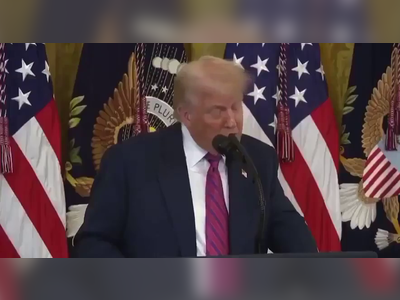Huge Copper, Gold, and Silver Discovery in Argentina and Chile — But the Profits Go Abroad
A world-class mineral find may enrich Canadian and Australian firms, while local citizens in Chile and Argentina get only a fraction
In early 2025, the global mining industry was shaken by a historic announcement: the Filo del Sol project, located in the Andes Mountains along the Chile-Argentina border, was confirmed as one of the largest undeveloped copper, gold, and silver resources in the world. With an estimated 4.5 billion pounds of copper, nearly 10 million ounces of gold, and over 250 million ounces of silver, the sheer scale of the deposit is staggering.
But the excitement for this monumental resource comes with a catch—the profits from this South American treasure will flow primarily to foreign hands, not to the citizens of the countries where it was found.
The Owners: Canadian and Australian Mining Giants
The project is now under the control of Vicuña Corp., a 50/50 joint venture between Lundin Mining (Canada) and BHP (Australia). These two mining conglomerates acquired the original rights by purchasing Filo Corp., the previous owner, in a $3.25 billion deal. As a result, the entire operation—mining rights, decisions, and profits—are now effectively in foreign hands.
While the resource lies physically within Argentina’s San Juan Province and Chile’s Atacama Region, local governments have only limited leverage. They will collect some royalties, taxes, and permit fees, but these are a small slice of what the resource is truly worth.
What the Locals Get: A Much Smaller Share
Despite hosting one of the largest mineral discoveries in recent history, the people of Chile and Argentina are likely to benefit modestly:
Royalties and Taxes: These will flow to the state, but often at relatively low rates and with generous tax benefits granted to large multinationals.
Jobs: The project will create employment opportunities, especially during construction. However, many technical and managerial roles are typically filled by imported staff.
Infrastructure: Some roads, utilities, and services will be built, but primarily to serve the mine—not necessarily to uplift nearby towns and villages
.
Community Investment: CSR (Corporate Social Responsibility) initiatives may build schools or clinics, but these are often symbolic compared to the billions in resource value.
Compare that to the value of the metals that will be shipped abroad—likely worth tens of billions of dollars over the project’s lifetime.
The Bigger Picture: Resource Extraction, Foreign Control
This is not a unique case. The Filo del Sol project exemplifies a broader pattern seen across many resource-rich developing countries: foreign corporations acquire the rights to extract and sell valuable natural resources, while host countries receive only a fraction of the value.
Critics say it’s a modern version of economic colonialism—a system where wealth is extracted from the land of the many to enrich the few abroad. Chileans and Argentinians will bear the environmental cost, the infrastructure burden, and the long-term land degradation, while the major windfalls go to Canada and Australia.
A Call for Fairer Distribution
This discovery has reignited debate across South America about mining policies, national sovereignty, and the equitable distribution of natural wealth. Some voices are calling for:
Renegotiated royalty structures
Stricter environmental safeguards
Greater national ownership or control
Revenue-sharing models for local communities
The question remains: will this treasure in the Andes help build a better future for the people of Chile and Argentina, or will it once again become a tale of local riches lost to foreign profits?
But the excitement for this monumental resource comes with a catch—the profits from this South American treasure will flow primarily to foreign hands, not to the citizens of the countries where it was found.
The Owners: Canadian and Australian Mining Giants
The project is now under the control of Vicuña Corp., a 50/50 joint venture between Lundin Mining (Canada) and BHP (Australia). These two mining conglomerates acquired the original rights by purchasing Filo Corp., the previous owner, in a $3.25 billion deal. As a result, the entire operation—mining rights, decisions, and profits—are now effectively in foreign hands.
While the resource lies physically within Argentina’s San Juan Province and Chile’s Atacama Region, local governments have only limited leverage. They will collect some royalties, taxes, and permit fees, but these are a small slice of what the resource is truly worth.
What the Locals Get: A Much Smaller Share
Despite hosting one of the largest mineral discoveries in recent history, the people of Chile and Argentina are likely to benefit modestly:
Royalties and Taxes: These will flow to the state, but often at relatively low rates and with generous tax benefits granted to large multinationals.
Jobs: The project will create employment opportunities, especially during construction. However, many technical and managerial roles are typically filled by imported staff.
Infrastructure: Some roads, utilities, and services will be built, but primarily to serve the mine—not necessarily to uplift nearby towns and villages
.
Community Investment: CSR (Corporate Social Responsibility) initiatives may build schools or clinics, but these are often symbolic compared to the billions in resource value.
Compare that to the value of the metals that will be shipped abroad—likely worth tens of billions of dollars over the project’s lifetime.
The Bigger Picture: Resource Extraction, Foreign Control
This is not a unique case. The Filo del Sol project exemplifies a broader pattern seen across many resource-rich developing countries: foreign corporations acquire the rights to extract and sell valuable natural resources, while host countries receive only a fraction of the value.
Critics say it’s a modern version of economic colonialism—a system where wealth is extracted from the land of the many to enrich the few abroad. Chileans and Argentinians will bear the environmental cost, the infrastructure burden, and the long-term land degradation, while the major windfalls go to Canada and Australia.
A Call for Fairer Distribution
This discovery has reignited debate across South America about mining policies, national sovereignty, and the equitable distribution of natural wealth. Some voices are calling for:
Renegotiated royalty structures
Stricter environmental safeguards
Greater national ownership or control
Revenue-sharing models for local communities
The question remains: will this treasure in the Andes help build a better future for the people of Chile and Argentina, or will it once again become a tale of local riches lost to foreign profits?










